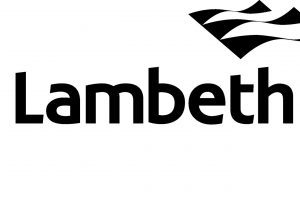If, by the turn of the twentieth century, cracks were beginning to show in the decorative façades of most European centres of power, the pain and the pleasure were nowhere more public than in Vienna. From the instinctual energies uncovered by Sigmund Freud and painted by his contemporary Gustav Klimt to the angst-ridden art of Oskar Kokoschka and Egon Schiele: from the theatrical splendour of institutional architecture to the clean lines of the sanatorium, there is plenty to analyse in the visual culture of Viennese Modernism. Through the work of famous painters, plus architects including Otto Wagner and Adolf Loos and writers and composers such as Arthur Schnitzler and Arnold Schoenberg, this course examines the radical overthrow of tradition by an avantgarde equipped with an uncanny x-ray vision into the fragile workings of an outdated Imperial society.
Vienna 1900: Beauty and the Uncomfortable Truth
When & Where
-
17 January 2025 - 14 February 2025 ( 10 hours, 5 weeks )
- Morning, Friday
-
View course timetable
-
Waterloo Centre
Quick Facts
- Availability Yes
- Tutor To be confirmed
- Course Code W24PDGB08A
- Suitable For 19 year olds and up are permitted on this course
What you will learn
Learning Outcomes
By the end of this course, you will be able to:
- Identify characteristic features of the art, architecture and applied art of Vienna around the turn of the twentieth century, recognising the work of key individuals and design collectives poised between modernity and tradition, formal beauty and function
- Understand the consequences of a new fascination for the instinctual self and for the workings of both mind and body, evident across the arts and literature of the era.
- Engage in discussion about the reform of urban spaces, public institutions and private dwellings during a period of rapid social and political change.
- Think critically about changing attitudes to matters including the role of the artist in society and the effects of building design on states of mind.
- Recognise overt cultural prejudices regarding differences in race and gender in an ethnically diverse urban environment.
- Consider the evidence in visual culture of the mounting political pressures in a crumbling empire on the brink of World War I.
Cost
Class format and activities
These sessions will be taught in an informal lecture/discussion format with PowerPoint presentations. There will be a 15-minute break in the middle of the session. You are encouraged to engage in discussion based on specific examples related to the overall topic and PowerPoint slides will be shared in advance by email. Further resources and text extracts will be provided for the basis of discussion and private study. Class Sequence 1. What Beauty! What Truth? Gustav Klimt and Sigmund Freud send shock waves through traditional Viennese society. 2. Architecture, Design and the ‘Sacred Spring’. On the curious combination of ornamental surfaces and modern functionality in the urban spaces and the modern interior. 3. The Gesamtkunstwerk, Genius (and Gender Trouble). Famous examples of the ‘total work of art’, and what place for women in Vienna’s avantgarde? 4. Viennese Expressionism: enter the enfants terribles. On the unflinching attention to the inner workings of both mind and body in the paintings of Oskar Kokoschka, Egon Schiele and contemporaries across the arts on the eve of WWI. 5. Things fall apart: 1918 and after. How art and architecture became a communal endeavour after the collapse of empire. And a critical review of thirty years of unprecedented cultural ferment.
Entry requirements
No previous knowledge of art history or Austrian culture is needed for this course, just a visual curiosity and a sense of enquiry for the ideas circulating around art and society in a significant place and historical era.
What you need to know before you enrol
This course is taught onsite at our Waterloo centre.
What you need
You will find it helpful to bring a paper and pen for making notes.









